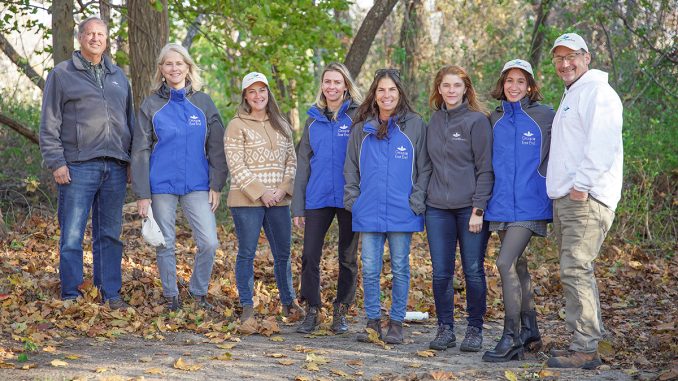
Advocate. Conserve. Educate. That has been the mantra of Group for the East End for 50 years. The Southold-based nonprofit has dedicated five decades to fighting for the protection and conservation of Long Island’s East End. Now it looks to take on the most pressing environmental issue: climate change.
Founded in 1972, Group for the East End’s environmental advocacy projects have shaped what the region looks like today. Over the years, it has developed and implemented land preservation strategies, helped establish the Peconic Estuary Program, supported legislation that designated over $2 billion toward land and water protection and even helped bring Long Island’s osprey population back from the brink of extinction.
“It can be very hard for community organizers to devote all of their time to understanding the nature of the area,” said president and CEO Robert DeLuca. “That’s why we were founded. We wanted professional, full-time staff members to work toward understanding the nature of the area in order to advocate for where government funds to preserve the East End were allocated.”
Educating the next generation of environmental leaders on ways to protect the East End has also become a cornerstone of the organization’s work. Since 1985, according to its website, educational programs have taught more than 90,000 children about the unique environment of the North and South forks and ways to preserve its beauty by becoming “stewards of their environment.” Classroom-based programs offer children an interactive way to engage with the environment around them while simultaneously highlighting the dangers of climate change and pollution.
“The entire structure of the East End relies on the natural environment,” said Mr. DeLuca. “The objective is to create an educated citizenry so that people have an opportunity to be effective in coming up with strategies and solutions at every age.”
Educational programs include adults as well, with family nature walks and an array of cleanup and restoration programs open to anyone wanting to get involved.
“There has been a real uptick in civic engagement in the last five to seven years on the North Fork,” said Mr. DeLuca. “Especially as we start to see the early effects of climate change.”
Group for the East End’s impact has been no small feat but challenging times lie ahead for the organization. For one thing, the pandemic, with new residents moving into the area, changed a lot.
“There has been a marked change in the amount of people visiting and buying homes on the North Fork and it is affecting our wildlife,” said Taralynn Reynolds, the nonprofit’s director of outreach. “The number of animals injured or killed [by motor vehicles] each weekend increased exponentially since COVID. We encourage our constituents and community members to be aware of the types of development projects coming through and help preserve this agricultural small-town feel even as the area grows.”
The organization continues to promote itself as “one of the most accomplished conservation organizations in New York State,” according to Mr. DeLuca. One of its most successful efforts was the establishment in 1999 of the Community Preservation Fund, a 2% tax on real estate transfers. Proceeds from the tax, which go into a fund for the conservation of farmland in the five East End towns, have amounted to over $1 billion since its inception and have protected thousands of acres of prime property.
“[The fund] has leveraged state and local money to become one of the largest success stories for environmental protection in the entire state,” said Mr. DeLuca. “The challenge now, is you have less available land and high real estate prices. There’s a hot market for real-estate development on the North Fork. How do we compete for conservation purposes?”
“The East End is a treasure to Long Island and should be treated as such,” said Ms. Reynolds. “The town is taking strides to make sure the North Fork stays the North Fork.”

